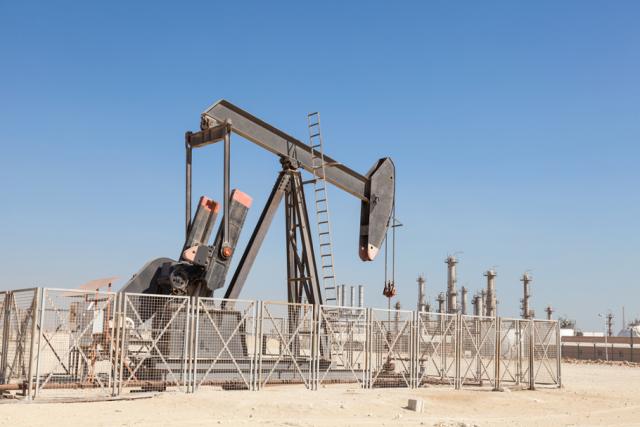
Opinions expressed by contributors are their own.
Although the oil and gas business unites countries in the Middle East, the region is experiencing some tension.
The blockade imposed on Qatar by Saudi Arabia, the United Arab Emirates, Bahrain and Egypt is causing concern. Plus, a recent report stating Saudi Arabia’s naval forces captured and questioned three members of Iran’s Revolutionary Guard, accused of intending to attack a shared offshore oil field between Saudi Arabia and Iran, raises concerns.
This comes amid the ascent of new leadership, which sometimes results in confrontation instead of reaching peaceful agreements.
Shared oil fields in the region could also be a source of tension, though it’s unlikely to happen. But, historically, these shared oil fields constitute a source of dispute and tension that have led to wars. This was the case with Iraq’s 1990 invasion of Kuwait, where the Ratga Field was one of the reasons behind the invasion. Iraq accused Kuwait of stealing billions of US dollars’ worth of oil from its Rumaila field, through vertical drilling, while Kuwait denied the claims. Following the Gulf War, the U.N. redrew the border map putting all the oil wells of Ratga on Kuwaiti soil.
Most of the shared oil and gas fields are located in the Arabian Gulf, which is considered one the world’s shallowest seas with depths rarely exceeding 100 m. While Arabian countries call the body of water the “Arabian Gulf,” Iranians call it the “Persian Gulf.” In addition, these fields are shared by countries that have ideological differences, such as Saudi Arabia and Iran. Such differences can hamper development, especially if borders are not drawn.
In some cases, these fields are behind rising tension.
In early June, the Saudi Arabia press agency said Saudi Naval forces thwarted an attack on the Marjan oil field. According to Wood Mackenzie, the Marjan complex, located off Saudi Arabia’s east coast, contains four offshore fields—Marjan, Lawhah, Maharah and Hamur. Marjan is the largest of the four, and most of its oil reserves lie within the Saudi Arabian part of the field although the Iranian portion, which is called Foroozan, also contains significant volumes of oil.
When Marjan was discovered in 1967, it contained an estimated 2.31 billion barrels (Bbbl) of crude. It has an output of about 270,000 barrels per day (bbl/d.)
Iran shares 28 oil and gas fields with neighboring countries. These joint fields contain 20% of Iran’s oil reserves and 30% of its natural gas, including the South Pars Field that Iran shares with Qatar (Qatari side is called North Field).
Another gas field that is under dispute is the Arash gas field. The field is known as Dorra in Kuwait and Saudi Arabia. Dorra is located in the Partitioned Neutral Zone, which Kuwait shares evenly with Saudi Arabia. An extension of the Arash Field, Dorra contains an estimated 1 trillion cubic feet of gas and 310 million barrels (MMbbl) of oil.
Previous political disputes over the field included Kuwait summoning the Iranian charge d’affairs to protest over reports that Tehran had published a brochure on opportunities for investment at the joint field. But in early May, Iran’s foreign ministry restricted the Iranian Offshore Oil Co. (IOOC) from doing any work at Arash, according to Hamid Bovard, managing director of IOOC.
While Tehran and Kuwait are yet to agree on their maritime claims, Riyadh and Kuwait struck a deal in 2000, but they shelved the project in 2013 due to a disagreement about transportation and resource allocation.
Iran and Saudi Arabia share another Gulf field named Lulu. The field is known as Esfandiyar in Iran.
Iran also shares fields with Iraq. The two countries recently signed a memorandum of understanding to settle disputes over the fields. Five Iraqi oil fields are situated along the border with Iran: Dehloran, Shahr, Paydar Gharb, Aban and Al Noor. Baghdad and Tehran share the fields of Majnoon, Abu Ghraib, Bazerkan, Al-Fakkah and Khana. These fields contain more than 95 Bbbl of reserves.
Saudi Arabia and Kuwait’s joint production from the neutral zone is still in limbo following Saudi Arabia’s decision in 2014 to shut down the Al-Khafji fields, citing unspecified environmental issues. The offshore field produced 250,000 bbl/d of oil. This was followed by the closure of the onshore field, Al-Wafra, which has a production capacity of about 220,000 bbl/d of Arabian heavy crude. Saudi media have claimed that part of the reason behind the closure of Al-Khafji is to stop migration of oil from Safaniya reservoirs to Al-Khafji.
Safaniya is the world’s largest offshore oil field with 37 Bbbl of oil reserves.
Recommended Reading
Exclusive: Mesa Minerals IV to Reload in Haynesville, Permian, Other Basins
2025-03-19 - Mesa Minerals IV, backed by NGP funds, is launching to acquire mineral and royalty interests in the Permian and Haynesville, said Mesa President and CEO Darin Zanovich at DUG Gas.
Queen’s Chess: Changing the Rules
2025-02-28 - There’s a popular response to the inexplicable: “I don’t know. I don’t make the rules.” But what is known with certainty, as shown throughout history, is that we can change them.
Comments
Add new comment
This conversation is moderated according to Hart Energy community rules. Please read the rules before joining the discussion. If you’re experiencing any technical problems, please contact our customer care team.



